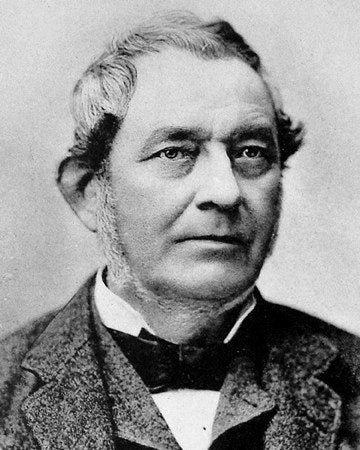Born: 30 March 1811 - Died: 16 August 1899
Robert Wilhelm Eberhard Bunsen was born in March 1811 to Christian Bunsen the head librarian and modern languages teacher at the University of Göttingen. As the youngest of four boys, his mother (from a military background) ensured that all of them were kept in line.
At the age of 17, he started working towards his degree taking modules in chemistry, physics and mathematics at the University of Göttingen where his father worked being taught by other famous scientists including Friedrich Stromeyer who discovered cadmium.
In 1830, he achieved his PhD in Chemistry at the age of 19 for his work on humidity meters. While he stayed on studying at the university he was awarded a scholarship that allowed him to travel around the world to further his studies.
One of Bunsens most notable achievements was discovering an antidote to arsenic poisoning in 1834 by using iron oxide hydrate which turned arsenic dissolved in water into ferrous arsenate rendering them harmless, this technique is still used today!
Bunsen created the Zinc-Carbon battery in 1841 as a cheaper replacement to the expensive Zinc-Platinum batteries.
In 1857 he published and released his designs for the Bunsen Burner which is still used worldwide today. Originally it was designed to help scientists and other chemists to help use the colours created by burning things to identify their chemical elements by colour. The Bunsen Burner was revolutionary at the time as it produced a clean flame that was nearly colourless.
Working alongside his friend and fellow researcher Gustav Kirchhoff in 1859, they combined a spectroscope and a Bunsen Burner in order to study the light patterns created by chemical elements when burning them. By noting the patterns and breaks in light using this method they discovered the elements Cesium and Rubidium in 1860 and 1861 respectively.

